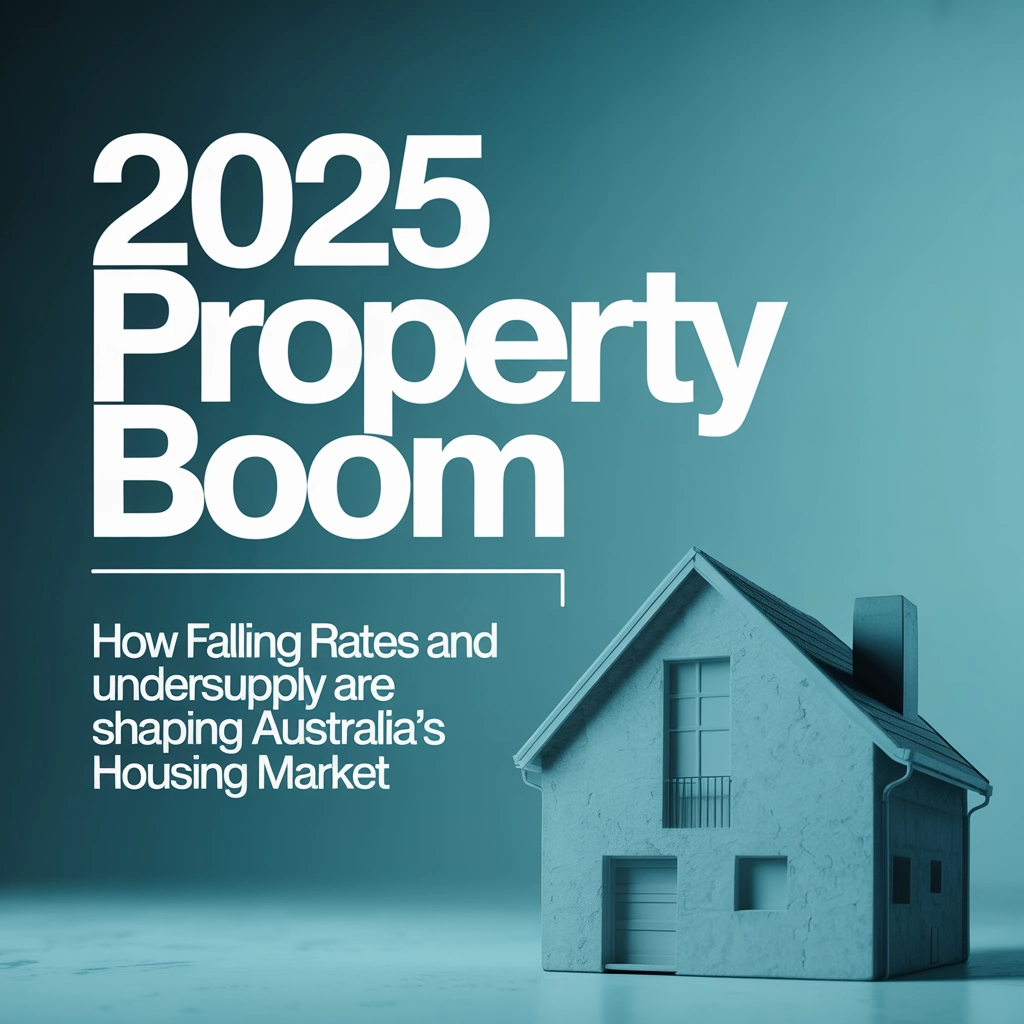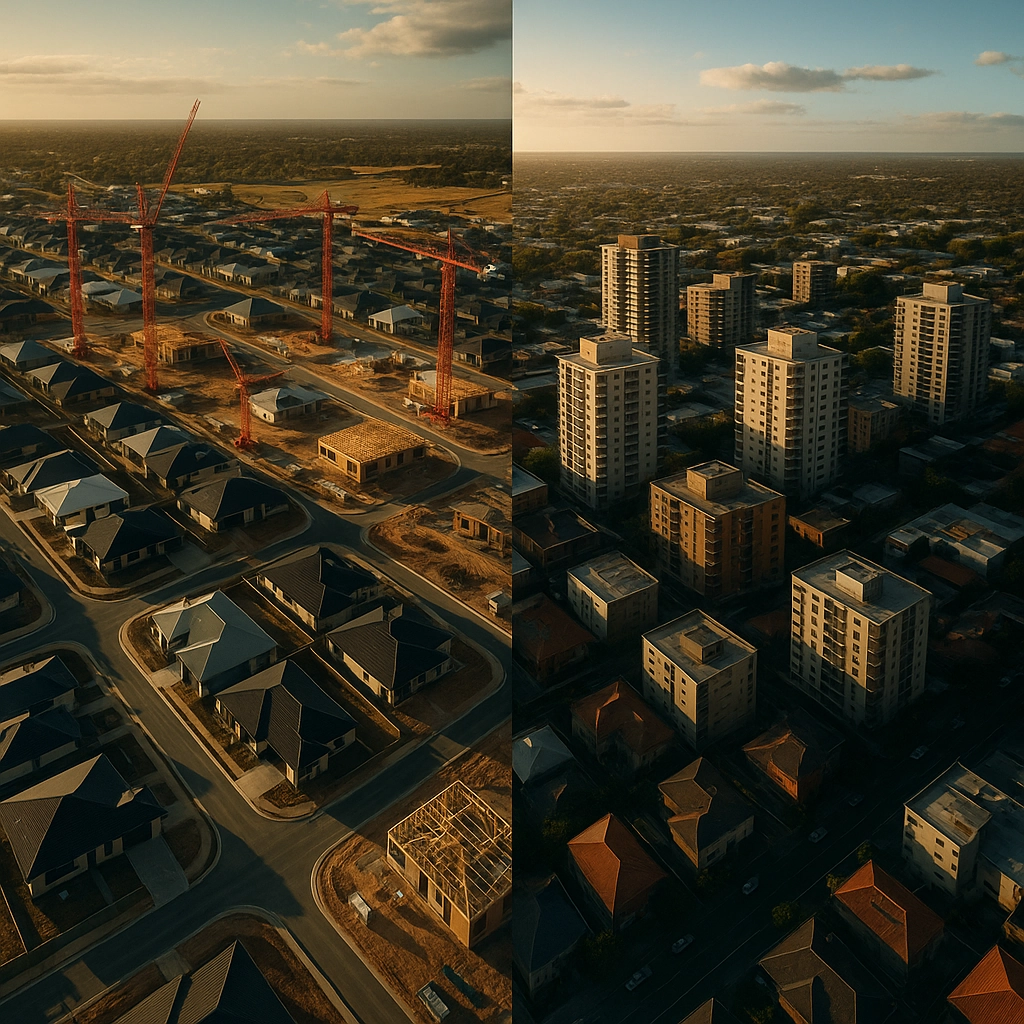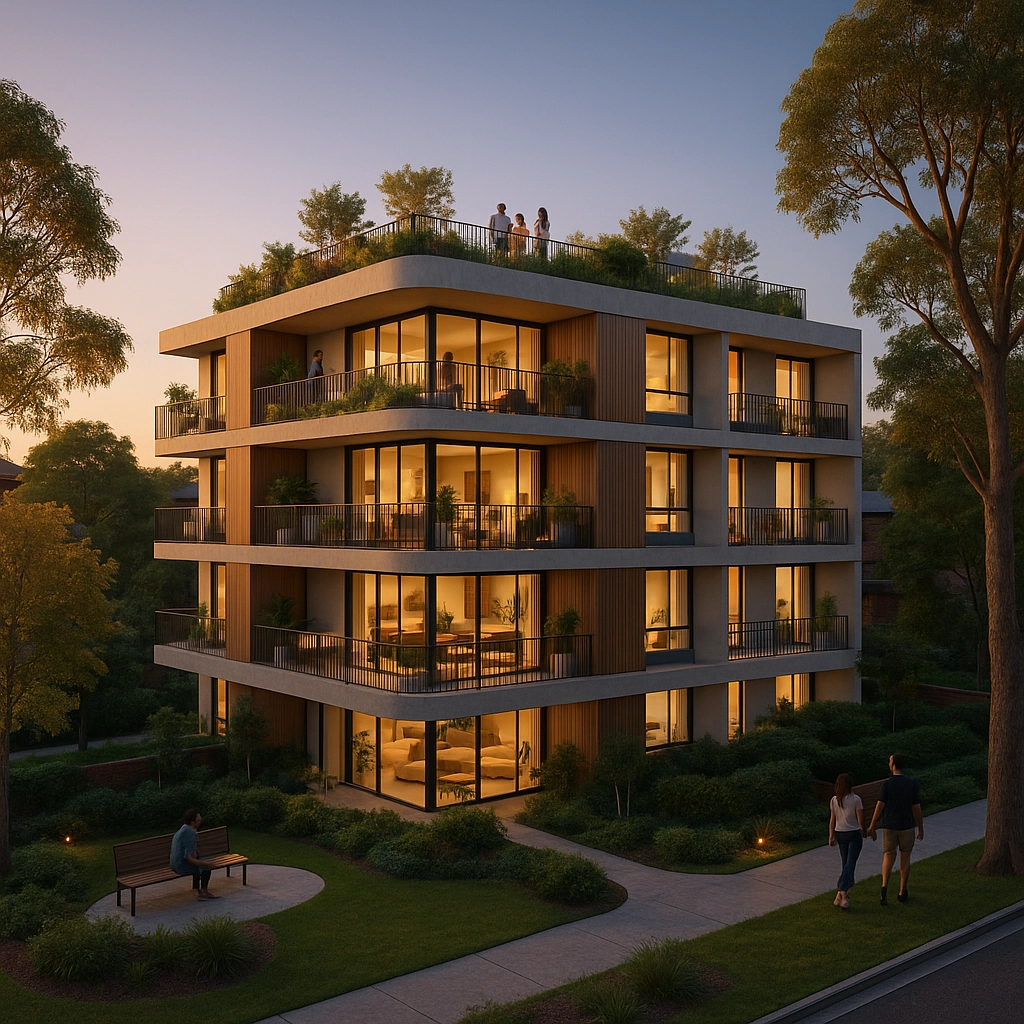2025 Property Boom: How Falling Rates and Undersupply Are Shaping Australia's Housing Market

The Perfect Storm: Interest Rates, Supply Issues, and Soaring Demand
The Australian property market in 2025 is experiencing a fascinating transformation. After years of interest rate hikes that cooled the market between 2022 and 2024, we're now seeing a remarkable shift. The combination of falling interest rates and chronic housing undersupply has created conditions ripe for what many experts are calling the "2025 Property Boom."
But what's really going on beneath the headlines? Is this boom sustainable? And more importantly, what does it mean for you as a homebuyer, seller, or investor? Let's dive into the factors driving this market and what you should know to navigate it successfully.
Falling Interest Rates: The Catalyst for Change
The Reserve Bank of Australia (RBA) has begun its eagerly anticipated easing cycle, with projections showing around 75 basis points in cuts over the next 18 months. This shift from the restrictive monetary policy we've endured is breathing new life into the property market.
After peaking at 4.35%, the cash rate is finally trending downward, with most economists predicting it will settle around 3.60% by the end of 2026. While this might not sound dramatic, even small reductions in interest rates can significantly impact borrowing capacity and market confidence.
"The first rate cut is always the most psychologically important," explains housing economist Sarah Chen. "It signals to the market that the cycle has definitively turned, even if the practical impact on mortgages is initially modest."
For example, on a $750,000 mortgage, each 0.25% rate reduction translates to approximately $125 less in monthly repayments. While that might not seem game-changing, the cumulative effect of multiple cuts – combined with the psychological boost they provide – is driving renewed buyer enthusiasm.

The Undersupply Crisis: Numbers Don't Lie
Perhaps the most significant factor in Australia's property boom isn't the falling rates but the severe housing shortage. Current projections indicate Australia will face a structural undersupply exceeding 100,000 dwellings by 2028 – a figure that continues to worsen despite government initiatives to increase housing stock.
Several factors are contributing to this undersupply:
-
Construction sector challenges: The aftermath of the pandemic continues to plague the building industry, with materials shortages, labor constraints, and rising costs causing construction timeframes to blow out. Multiple high-profile builder collapses have further reduced capacity.
-
Planning and approval bottlenecks: Despite federal and state commitments to streamline development processes, the reality on the ground remains frustratingly slow for developers.
-
Population growth exceeding forecasts: Australia's population growth has rebounded more strongly than expected post-pandemic, with net overseas migration running at levels not seen in decades. This demographic pressure is especially pronounced in major capitals.
Construction output currently sits at around 40,000 new dwellings per quarter – woefully inadequate compared to the 60,000 quarterly completions needed to address current shortfalls.
"We're essentially trying to fill a bathtub with a teaspoon while the drain is wide open," notes urban planning expert Dr. Michael Forrest. "Until supply can meaningfully catch up to demand, upward pressure on prices will persist."
Regional Variations: A Tale of Many Markets
One of the most striking aspects of the 2025 property landscape is how dramatically different the picture looks depending on where you are in Australia. The national headline figures mask significant regional variations:
Booming Markets
-
Perth: Leading the nation with price growth approaching 20% annually in some suburbs, driven by the resources sector resurgence and the lowest vacancy rates in the country.
-
Brisbane and South East Queensland: Showing strong 12-17% annual growth in desirable suburbs, bolstered by interstate migration and infrastructure development ahead of the 2032 Olympics.
-
Adelaide: The quiet achiever, with consistent 8-10% growth and strong rental yields attracting investors priced out of eastern seaboard markets.
Steady Markets
-
Sydney: After the sharp corrections of 2022-23, Sydney has rebounded with 5-7% annual growth, though affordability constraints continue to limit more explosive increases.
-
Canberra: Stable government employment and high average incomes supporting steady 4-6% growth, with particular strength in the premium segment.
Challenged Markets
-
Melbourne: Still struggling with an oversupply of inner-city apartments and slower population growth, with some areas experiencing price stagnation despite the national uptrend.
-
Regional centers that boomed during COVID: Many tree-change and sea-change locations that saw massive price increases during the pandemic are now experiencing price corrections as work-from-home policies evolve.

The Unit Market Renaissance
One of the most notable trends in 2025 is the outperformance of units (apartments and townhouses) compared to houses. KPMG projections show unit prices increasing by 4.6% in 2025 and 5.5% in 2026, compared to house price growth of 3.3% in 2025 and 6% in 2026.
This shift reflects several factors:
-
Affordability pressure: With detached house prices beyond reach for many first-home buyers, apartments and townhouses offer a more accessible entry point.
-
Changing demographics: Smaller household sizes and an aging population are increasing demand for lower-maintenance living options.
-
Infrastructure improvements: Major transport projects coming online in 2024-2025 have dramatically improved connectivity for medium-density areas previously considered inconvenient.
-
Supply constraints: While apartment construction has increased, it hasn't kept pace with demand, particularly for larger, higher-quality units suitable for owner-occupiers rather than investors.
The strongest performers are typically "boutique" developments of 20-50 apartments in middle-ring suburbs with good amenities and transport links. In contrast, high-rise CBD apartments continue to underperform, with oversupply issues still prevalent in some inner-city markets.
What This Means for Different Market Participants
First-Home Buyers
For those looking to get onto the property ladder, the environment is challenging but not impossible. Government schemes like the First Home Guarantee continue to evolve, offering pathways with deposits as low as 5% without mortgage insurance.
The strategy for first-home buyers in 2025:
- Consider units or townhouses as your first purchase
- Look at middle-ring suburbs with good transport links
- Be prepared to move quickly when the right property appears
- Get pre-approval in place before you start serious hunting
- Consider teaming up with family members to boost borrowing capacity
At We R Available , we've helped numerous first-home buyers navigate these challenges with tailored finance solutions that mainstream lenders can't match.
Upgraders
For existing homeowners looking to move up the property ladder, timing is critical. The gap between selling and buying in a rising market can be costly if not managed properly.
Strategic approaches include:
- Securing finance for the new purchase before selling
- Negotiating longer settlement periods to allow time to find your next home
- Considering bridging finance options to avoid the buy-sell gap
Investors
With rental yields improving and capital growth returning, property investment is back on the agenda for many. The key factors to consider:
- Cash flow has become more important than ever – ensure the numbers work with higher interest rates
- Regional markets offer stronger yields but potentially higher vacancy risks
- Look for areas benefiting from infrastructure improvements or population growth
- Tax changes have made new or nearly new properties more attractive from a depreciation perspective

Construction and Development Outlook
The building industry continues to face significant challenges in 2025. Material costs have stabilized somewhat, but labor shortages remain acute, particularly for specialized trades. Small to medium builders continue to struggle with tight margins and financing constraints.
For developers, the economics of new projects have improved slightly with rising end prices, but challenges remain:
- Land costs continue to rise faster than finished property prices
- Approval timeframes remain lengthy despite government promises
- Construction finance is available but with stricter conditions and higher equity requirements
- Rising sustainability requirements add costs but also marketability
The federal government's Housing Australia Future Fund is starting to deliver results, but the pace of new social and affordable housing remains well behind targets.
Looking Ahead: What's Next for the Market?
While current conditions favor continued price growth through 2025 and into 2026, several factors could influence the trajectory:
-
Interest rate path: If inflation proves more stubborn than expected, the RBA might slow or pause its cutting cycle, cooling market enthusiasm.
-
Supply response: Government initiatives to boost construction could begin to bear fruit, gradually easing supply pressures in specific market segments.
-
Foreign investment: Changes to foreign investment rules have increased international buyer interest, particularly from Southeast Asia, adding another demand layer in premium markets.
-
Rental market dynamics: Extremely tight rental markets are driving more renters to consider buying, but affordability constraints limit how many can make this transition.
The consensus view suggests continued but moderating growth through 2026, with the potential for a market plateau rather than correction as supply gradually improves and interest rates stabilize.
Conclusion: Navigating the Boom
Australia's 2025 property boom represents both opportunity and challenge. The combination of falling interest rates and persistent undersupply creates conditions for continued price growth, but with significant variations across regions and property types.
For those looking to participate in this market – whether as buyers, sellers, or investors – expert guidance has never been more valuable. At We R Available , our team specializes in helping clients navigate these complex conditions with tailored finance and property solutions.
Whether you're a first-home buyer trying to get a foothold, an investor seeking opportunities, or a homeowner wondering if now is the time to make your move, we're here to help you make informed decisions in this dynamic market.
Want to discuss your specific situation and options? Contact us today for a personalized consultation.









